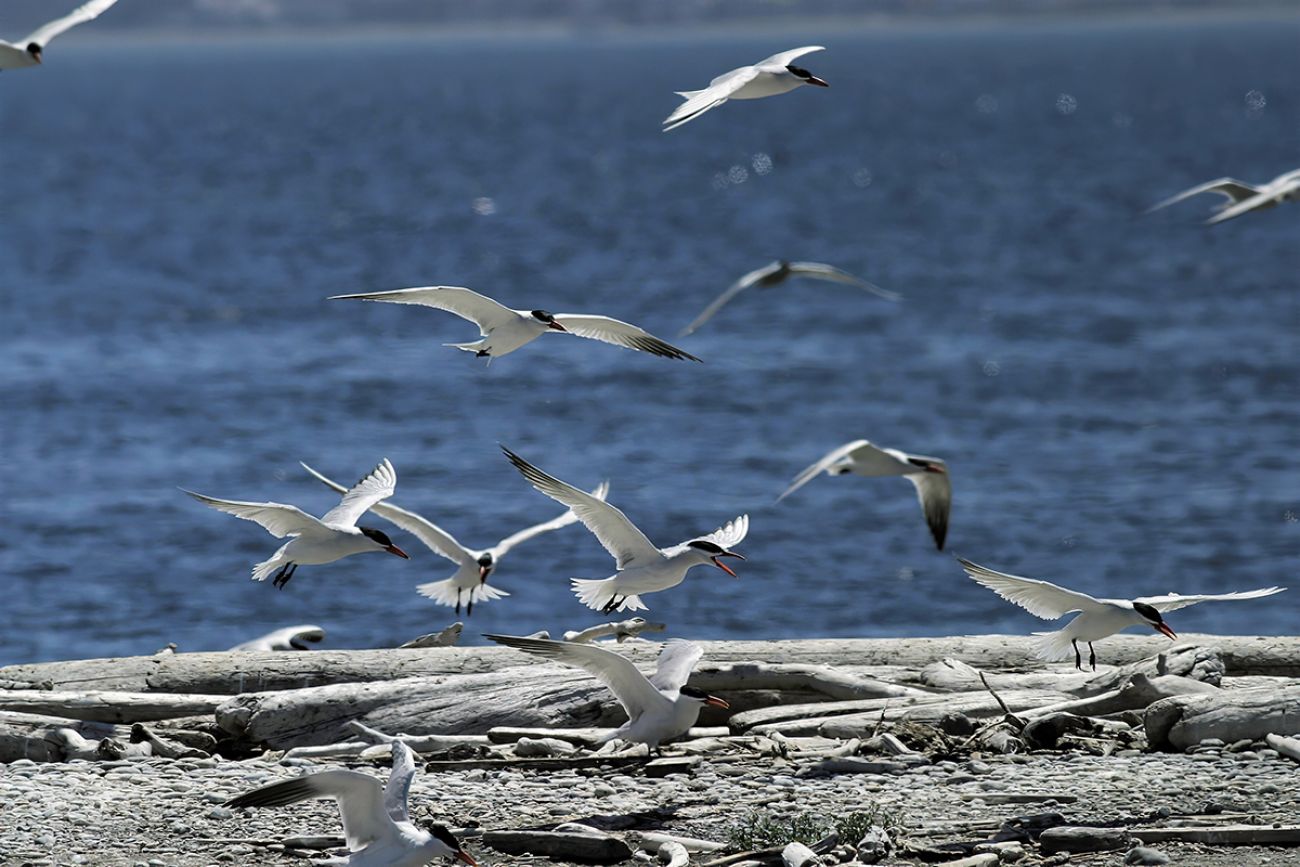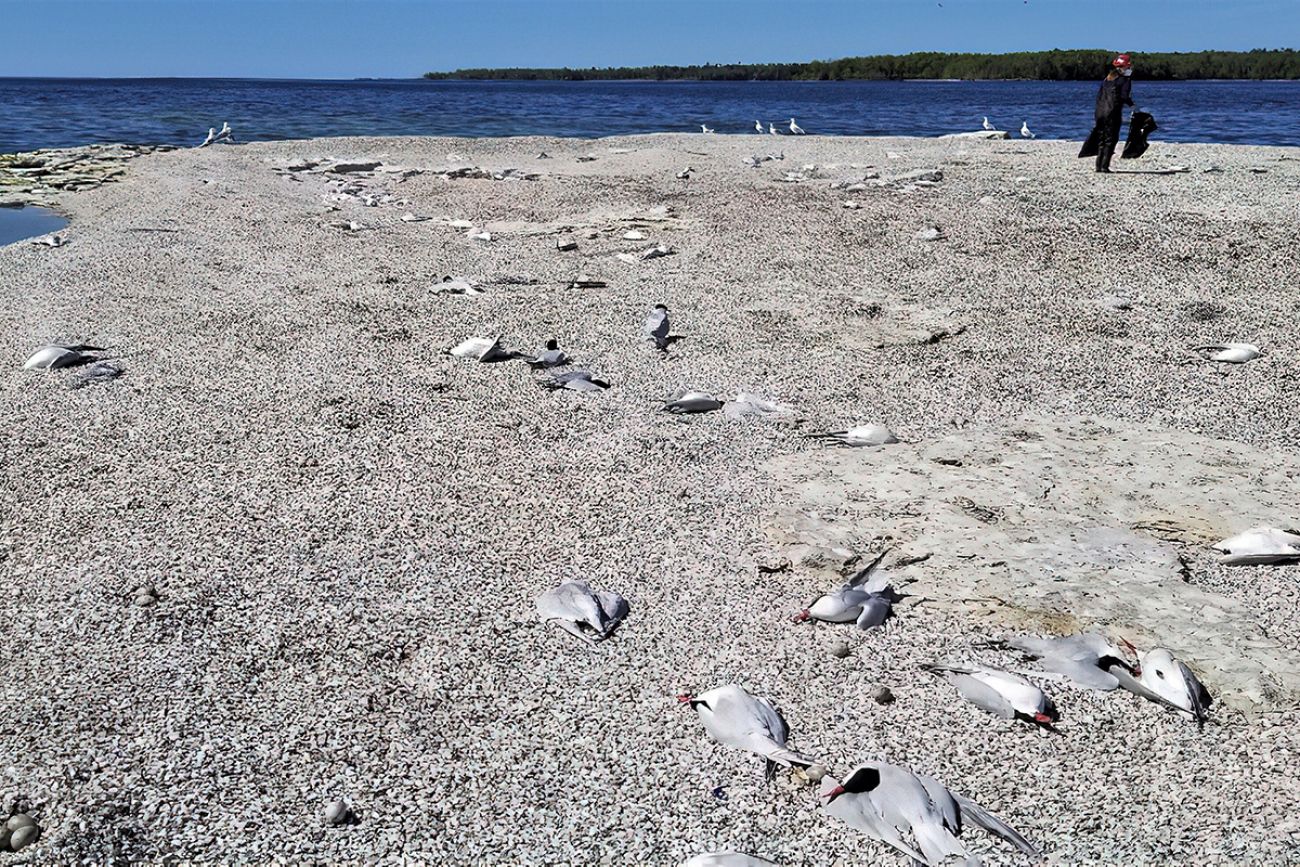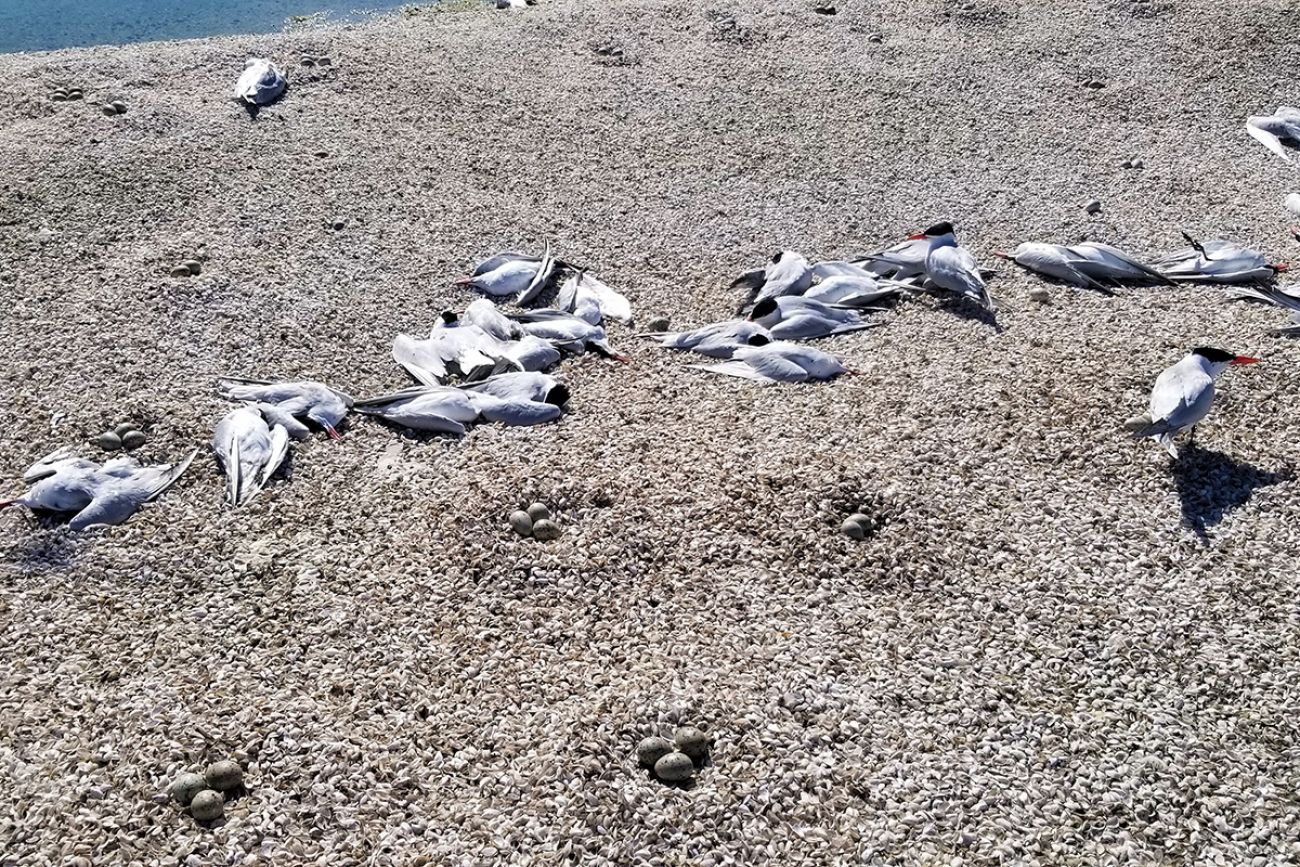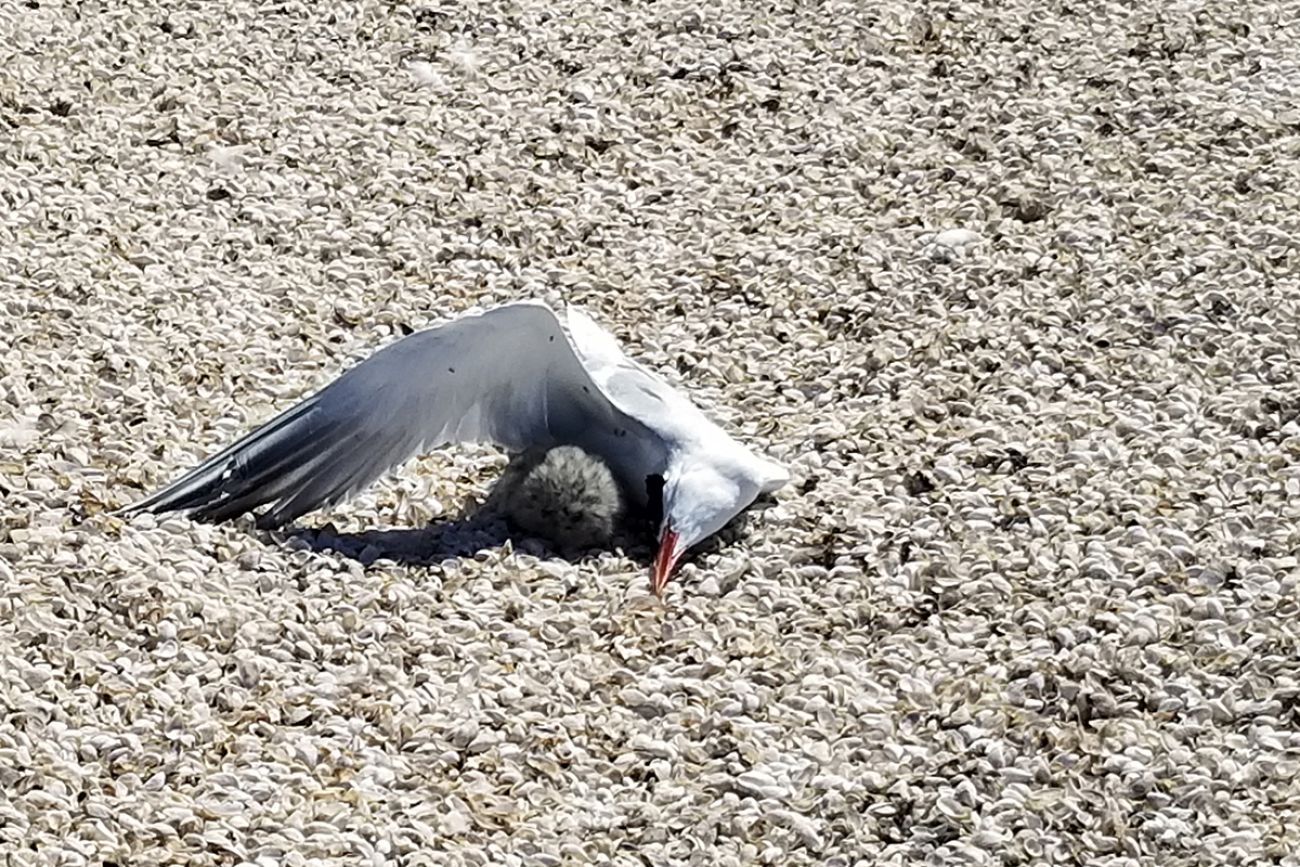Bird flu has killed nearly 1,500 Caspian terns on Lake Michigan islands

Bird flu is the likely culprit in the deaths of nearly 1,500 Caspian terns, black-crowned seabirds that feed along islands in Lake Michigan.
Wildlife biologists are finding whole colonies of birds dead or dying on the islands. Caspian terns are listed as threatened in Michigan and endangered in Wisconsin.
This article is part of The Great Lakes News Collaborative, which includes Bridge Michigan, Circle of Blue, Great Lakes Now at Detroit Public Television, and Michigan Radio. It unites newsroom resources to report on the most pressing threats to the Great Lakes and drinking water supplies, including pollution, climate change, and aging infrastructure. The independent journalism is supported by the Charles Stewart Mott Foundation.
“Seeing hundreds of dead birds scattered in a line before you with others dying among those…it's a feeling of helplessness, knowing that there's nothing, absolutely nothing you can do for those birds,” said Sumner Matteson, an avian ecologist with the Wisconsin Department of Natural Resources.
Related:
- The bird flu: Clean your birdfeeder right now
- Wash your hands: Highly contagious bird flu reaches Michigan wild flocks
Matteson said he’s never seen anything so traumatic in his 42 years on the job.
On Bellow Island in Michigan’s Grand Traverse Bay, another scientist discovered colonies that were wiped out.
“Last count prior to the time we were out there was 201 nests and we found 255 dead adults,” said Jim Ludwig, an environmental consultant who has studied Great Lakes birds for decades.

He guessed that more than that died elsewhere, including in the lake, while scavengers might have carried off other remains.
Found along the coasts of oceans and large lakes, the crow-sized birds are white and gray in color, with long, reddish-orange, black-tipped bills. Long-lived and slow to procreate, they can survive 30 years but don’t breed until they’re at least three years old. The terns eat mostly fish, with a particular taste for alewife in the Great Lakes, and nest in dense ground colonies, which could make them particularly vulnerable to spreading disease.
“Caspian terns are magnificent birds. They've got that striking black cap and they fly along, looking down at the water while they fly and then suddenly plunge into the water to catch fish. They're exciting to watch,” said Lisa Williams, a Contaminants Specialist with the U.S. Fish and Wildlife Service.

In recent years, the bird’s population has been growing. In 2018 they peaked at about 10,000 Caspian terns in the Great Lakes region. Then high water levels made nesting difficult for the birds.
Now it appears that Highly Pathogenic Avian Influenza known as bird flu is killing them by the hundreds.
“Caspian terns nest very close together,” Williams said. “And for a disease that's transmitted through the air, they're in close enough proximity that that can happen fairly readily on their colonies.”
The result is that at least 1,476 adult terns are dead on Lake Michigan islands

Sadie O’Dell, a wildlife biologist at Wisconsin’s Gravel Island National Wildlife Refuge, a protected breeding ground for colonial nesting birds, said the terns discovered still alive could barely hold their heads up. They were experiencing tremors from the neurological damage caused by the bird flu virus. Some were in their nests, still trying to incubate eggs when they died.
Matteson said at this point, as estimated 64 percent of the adult Caspian terns in Wisconsin are dead.
“Absolutely devastating. Catastrophic. It's going to take years for the Wisconsin population to recover,” he said, or perhaps decades.
Such a massive die-off will mean the loss of a new generation of Caspian terns, said Francie Cuthbert, a professor with the University of Minnesota’s Department of Fisheries, Wildlife and Conservation Biology.
“No young are being produced,” Cuthbert said. “And then the loss of all of these adults is serious.”
“Losing all these older, experienced breeders is also very important because they tend to increase in terms of their productivity and just their knowledge of how to raise young,” Cuthbert said.
Why Caspian terns are being hit so hard by avian influenza, while other close-nesting seabirds have not experienced the same kind of devastation is baffling to the scientists. There have been deaths among ring-billed gulls, cormorants, and others, but not at the rate of Caspian tern deaths.
Cuthbert said it’s hard to say how critical the deaths will be to the future of the bird. “Until we really have a full tally on how many birds have died, we're not going to be able to model the impact on the population, but it's definitely going to have a deep drop.”
Michigan Environment Watch
Michigan Environment Watch examines how public policy, industry, and other factors interact with the state’s trove of natural resources.
- See full coverage
- Subscribe
- Share tips and questions with Bridge environment reporter Kelly House
Michigan Environment Watch is made possible by generous financial support from:
Our generous Environment Watch underwriters encourage Bridge Michigan readers to also support civic journalism by becoming Bridge members. Please consider joining today.
See what new members are saying about why they donated to Bridge Michigan:
- “In order for this information to be accurate and unbiased it must be underwritten by its readers, not by special interests.” - Larry S.
- “Not many other media sources report on the topics Bridge does.” - Susan B.
- “Your journalism is outstanding and rare these days.” - Mark S.
If you want to ensure the future of nonpartisan, nonprofit Michigan journalism, please become a member today. You, too, will be asked why you donated and maybe we'll feature your quote next time!






